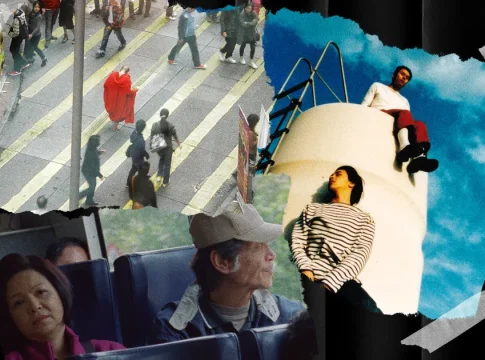Navigating Grief Through Film: A Look at A Journey in Spring
What happens when our past refuses to fade away? At Queer East 2025, the theme of grief danced like a ghost throughout the festival, haunting characters and plots with emotional weight. Two standout films, A Journey in Spring by Wang Ping-Wen and Peng Tzu-Hui and Looking For An Angel by Akihiro Suzuki, take us on profoundly different yet equally poignant journeys through mourning and memory.
A Journey in Spring: A Haunting Routine
Set against the lush, rain-drenched hills just outside Taipei, A Journey in Spring introduces us to Khim-Hok, an aging man whose life is steeped in routine and silence. When his wife, Siu-Tuan, suddenly passes away, Khim-Hok’s denial is palpable—so much so that he stashes her body in the freezer, choosing to navigate his daily life as if nothing has changed.
Imagine maintaining your mundane errands while your loved one’s lifeless body becomes an unsettling fixture at home. Talk about cringe! The film’s poignant pacing—with its still, lingering shots—paints grief as a slow suffocation, something that neither evaporates nor settles comfortably. In a tender, yet heart-wrenching moment, Khim-Hok finally reaches out to touch Siu-Tuan’s face, breaking through his emotional blockade—a cinematic gasp that speaks volumes in an otherwise muted narrative.
Erasure in Looking For An Angel
In stark contrast, Looking For An Angel centers on a young porn star whose violent death casts a long shadow. Here, grief is less about the warm ache of shared memories and more about the brutal erasure of potential futures. It’s a soulful reflection on what could have been, highlighting the stark violence that disrupts lives too soon. Characters grapple with the weight of absence—each memory a gentle thump against the heart, echoing the pain of a life unwritten.
A World Redefining Grief
Both films present a tapestry of emotions woven intricately through time. Khim-Hok’s solitary existence shifts as his estranged son returns, pulling the threads of grief tighter and revealing an emotional chasm filled with unspoken words and unresolved tensions. The choreography of their interactions—standing apart yet sharing the same space—further illustrates the disconnection running deep. Their conversations are laced with silence, not unlike the rhythmic, routine exchanges Khim-Hok once had with Siu-Tuan.
In the haunting climax, Khim-Hok finally speaks to his wife’s body on a final journey to the crematorium, desperately clinging to their shared memories. The film radiates a powerful message: while life moves on, some grief is not just forgotten; it hangs in the air, unyielding, demanding to be acknowledged.
Final Thoughts
These films masterfully encapsulate the complex nature of grief, from the quiet ache of shared existence to the agony of lives disrupted. As we explore these narratives, we’re reminded that mourning isn’t linear; it’s a tangled, heavy thing that insists on being felt. Whether it’s the slow burn of acceptance in A Journey in Spring or the sharp edges of loss in Looking For An Angel, these films invite us to navigate our own emotional territories. So grab your popcorn and brace yourself for a rollercoaster of feels—these stories promise to linger long after the credits roll.

Covers viral stories, pop culture, and breaking celebrity news.
Bio: Jamie has a sharp eye for what’s buzzing online, tracking social media trends and entertainment headlines around the clock.

